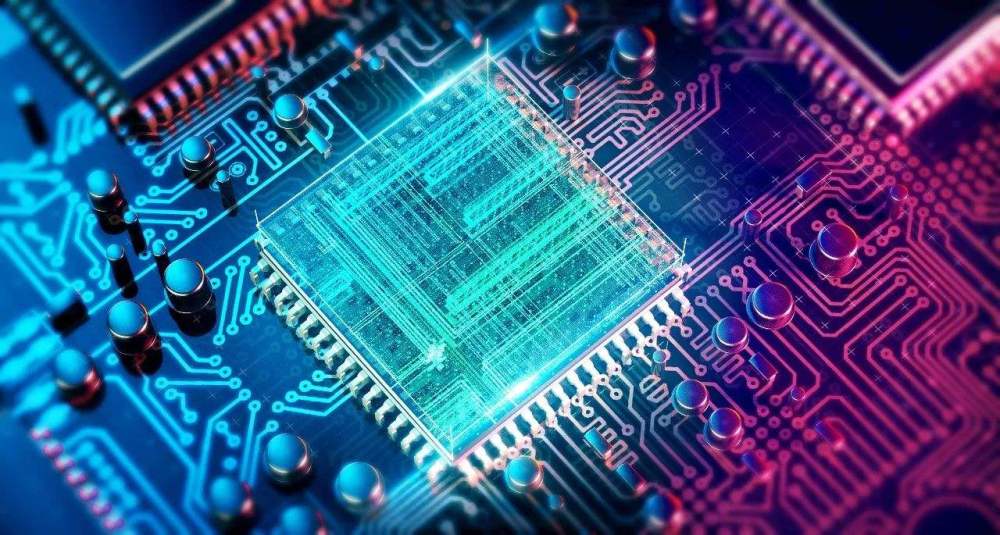作为降低刚性多层印制线路板制作成本的措施,可以从印制线路板的种类、尺寸、加工工艺和材料等多种角度着手。

一、印制线路板尺寸设计的对成本的影晌
原始尺寸的敷铜板尺寸过大,加工起来不方便,有时候甚至无法放入印制线路板加工设备中进行加工,因此需要首先将它切割成若干块加工尺寸大小的敷铜板。至于加工尺寸的具体大小,则需要根据制作印制线路板的加工设备情况、每一块印制线路板的尺寸以及一些工艺参数来确定。这些工艺参数除了印制电路图形本身需要的长度和宽度外,还要包括往电子产品框架上固定印制线路板的螺钉孔所消耗的宽度,外形加工的工艺留量,化学镀、电镀与腐蚀时的夹具夹持留量,多层印制线路板时的定位销留量,层间的对位标志留量,印制线路板制作厂商的标志留量,印制线路板的边宽等,其中有的工艺参数推荐值可以向敷铜板生产厂商或经销商索取。印制线路生产加工时,可以根据上述数据来确定将一块大的原始尺寸的敷铜板究竟裁成多少块加工尺寸的敷铜板、是纵向裁切还是横向裁切、可不可以进行套裁等等。
图4.86 是一个原始尺寸敷铜板的裁切举例。它是将一块原始尺寸的敷铜板裁切成了4 块加工尺寸的敷铜板,而每一块加工尺寸的敷铜板包含了6 块印制线路板。如果印制线路板的纵向尺寸增大1mm ,那么每一块加工尺寸的敷铜板就只能裁切成了4 块印制线路板,无疑这将使印制线路板的成本增加到了6 块印制线路板时的150% 。由此可见,根据敷铜板的原始尺寸,合理的设计印制线路板的尺寸的重要性。
敷铜板的原始尺寸
敷铜板原始尺寸与印制线路板大小
二、印制线路板的层数对成本的影晌
印制线路板随着层数的增加,制作成本会急剧增加,因此有可能因为一念之差而造成成本的大幅差异。如果你设计一个6 层的印制线路板遇到困难时,切不可轻言放弃,也许大笔的经济效益就在你的坚持一下的努力之中;不过,这也很不容易勉为其难,因为当遇到这种事情时,多数情况下设计者都可能毫不犹豫地去选择设计一个8 层的印制电路。
三、CEM-3 材料
制作双面印制线路板所使用的双面敷铜板,除了广泛使用的双面环氧树脂玻璃布敷铜板之外,还有一种低成本的CEM-3 材料,参见图4.87. 其结构是将原有双面环氧树脂玻璃布敷铜板中作为基材的较厚的环氧树脂玻璃布改做成非常薄的两个薄片,这时候由于强度不够,而在两个薄片环氧树脂玻璃布之间夹入环氧树脂玻璃无纺布,从而降低了成本。CEM-3 材料质地较软,除了可以单独使用外,还可以作为多层刚性印制线路板的芯材使用。
CEM-3材料的结构
CEM-3材料的结构
四、导体图形的线宽与间隙宽度之比对成本的影晌
印制线路板中导图形的宽度如果用L 来表示,导体图形之间的间隙宽度用S 来表示,那么LIS 就代表了该导电带的宽度与间隙宽度之比。随着这个比值的减小,印制线路板的生产成品率会急剧减少,成本也会上升。这种现象在电路密度比较高的场合下表现得更为明显。因此,切不可任意地减小LIS 的值。
五、通孔的孔径对成本的影晌
在采用钻头对印制线路板打孔的情况下,当孔径低于某个数值后,钻头的一次钻进深度会急剧缩短。也就是说同样打一个孔,钻孔径小的孔时,钻头需要多次退出散热,于是就会降低生产效率,提高成本。所以,不要随意减小通孔的孔径;而且还应当尽可能地减少通孔的数量。
六、用银浆料填充通孔
对于双面印制线路板的贯通孔,不用镀铜的方法实现两面电路的连通,而是采用往贯通孔中填充银浆料的方法,也可以降低双面印制线路板的成本。具体的工艺过程示意图示于图4. 88 。这种方法一般用于双面敷铜的普通酚醛树脂纸板。该方法首先将双面敷铜的普通酚醛树脂纸板进行表面清洁处理,接着在其两面用丝网印刷法印制抗蚀图形,经腐蚀后形成导体图形,去掉抗蚀层后打贯通孔,然后往孔内填充银浆料。为了使银浆料能够与两面的导体图形良好接触,银浆料应当鼓出贯通孔,并且在鼓出部分的银浆料图形的直径大于贯通孔的孔径。为了阻挡银离子迁移,在银浆料鼓出部分的表面通过丝网印刷加盖一层覆盖层。继而,再在两面丝网印刷阻焊图形、隔离图形,冲压或钻出固定印制电路板的螺孔,加工外形。后通过检验,银浆料填充贯通孔的双面印制线路板就制作完成了。
银浆料填充通孔工艺
银浆料填充通孔工艺
一般说来,由于基材的原因这种银浆料填充贯通孔的双面印制线路板不适合用于高可靠电路。另外,由于银浆料中除了导电物质外,还有大量不导电的材料,因此银浆料的导电性能不如铜箔的导电性能好,也应当提请读者注意。